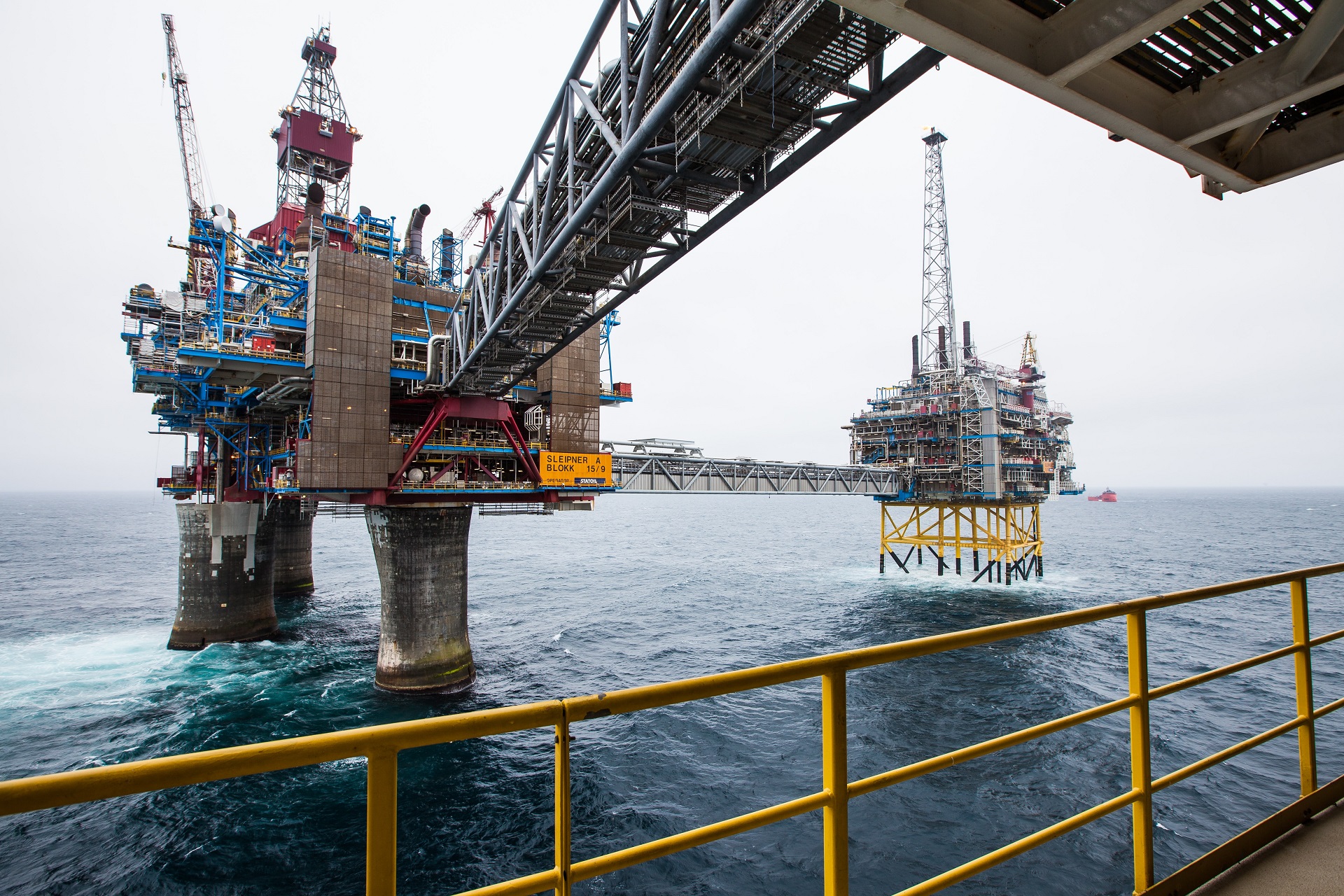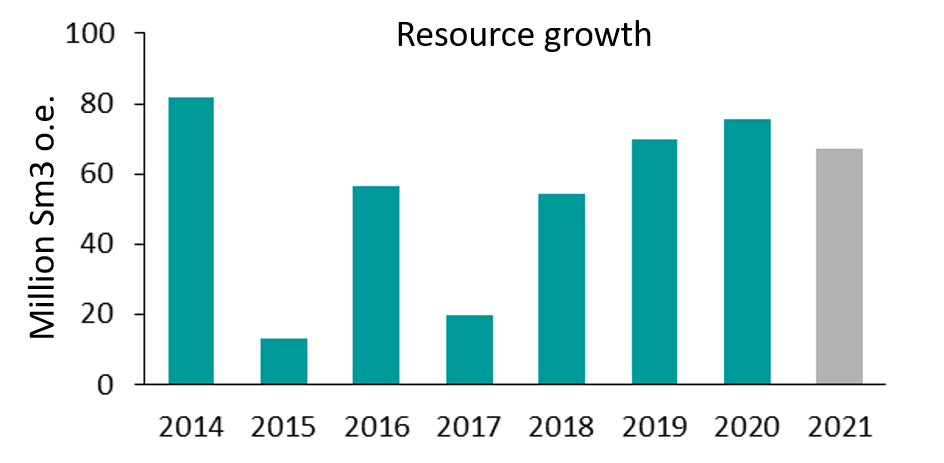High activity level on the Norwegian shelf

Illustration image: The Norwegian Petroleum Directorate/Morten Berentsen
21/07/2021 The activity level on the Norwegian continental shelf (NCS) has been high in the first six months of the year – despite the Covid situation. Eight discoveries have been made, production remains high, and many new development projects are on the drawing board.
During the first six months (as of 30 June), a total of 17 wildcat wells have been completed on the NCS, resulting in eight discoveries. The size of these discoveries is still uncertain, but estimates indicate that, in total, they could amount to more than double the volume of oil and gas contained in the Goliat field in the Barents Sea (estimated reserves for Goliat is more than 31 million standard cubic metres of oil equivalent).
The discoveries have been made in mature areas, near other fields and infrastructure. Utilising the existing infrastructure could allow cost-effective development of the new discoveries, which would then represent significant value creation. New discoveries have been made in all three sea areas, the North Sea, the Norwegian Sea and the Barents Sea.
Overview – discoveries first half of 2021
| Well | Name | Resource growth, M Sm3 o.e. | Low-High estimate, M Sm3 o.e. |
| 25/8-20 B and S | King and Prince | 11.5 | 9 - 14 |
| 34/6-5 S | Garantiana West | 2.5 | 1.3 – 3.6 |
| 6507/4-2 S | Dvalin Nord | 18.0 | 11 - 25 |
| 15/12-25 | Jerv | 0.0 | Presumably not recoverable |
| 16/4-13 S | D segment | 1.0 | 0.5 – 1.4 |
| 7220/7-4 | Isflak | 6.5 | 5 - 8 |
| 31/1-2 S | Røver Nord | 9.0 | 7 - 11 |
| 31/2-22 S | Blasto | 15.5 | 12 - 19 |
| Total expected resource growth | 63,9 |
Table 1: Overview expected resource growth first half 2021
Exploration is key
The Norwegian Petroleum Directorate (NPD) also expects a high level of exploration activity in the time ahead. According to the NPD’s forecasts at year-end around 40 exploration wells will be drilled this year, while 31 exploration wells were spudded in 2020.
“Exploration has enormous significance for long-term value creation on the shelf. The addition of oil and gas resources from new discoveries, like we have seen so far this year, is necessary to prevent a sharp decline in petroleum industry activity after 2030. Without new discoveries, production could fall by more than 70 per cent in 2040 compared with 2020”, says Torgeir Stordal, director of Technology and coexistence at the Norwegian Petroleum Directorate.

Figure 1. Resource growth first half of 2021 compared with previous whole years.
“Exploration is also important for the fields. Phasing in new discoveries to existing fields provides a better foundation for a further commitment to improved recovery and extended production. This is a link between exploration and increased value creation from the fields,” says Kalmar Ildstad, director of Licence management at the Norwegian Petroleum Directorate.
New exploration acreage
In January, 30 companies were offered a total of 61 new production licences in APA 2020. Once again, the companies exhibited great interest in gaining access to new exploration acreage in this round. APA 2021 was announced in June, with an application deadline of 8 September 2021.
In June, seven companies were offered ownership interests in a total of four production licences in the 25th licensing round on the Norwegian shelf. One of these four production licences is in the Norwegian Sea and three are in the Barents Sea. Two of these are additional acreage for existing production licences.
Petroleum production
Total petroleum production in the first six months is 112,8 million standard cubic metres (Sm3) of oil equivalent (o.e.).
Of this, around 49,9 million Sm3 is oil, 55,1 billion Sm3 is gas and 7,8 million Sm3 is NGL and condensate.
Production in the first half of 2021 is 2,4 (Sm3 o.e.) less than the corresponding period in 2020.
Read more: Production figures June 2021
During the first half of 2021 a total of 94 development wells have been , which is somewhat higher than during the same period last year (86). Drilling wells is the single most important measure to increase production.
New development plans
As of now, 91 fields are producing on the NCS, including Martin Linge which came on stream at the very end of June, and more are planned. The authorities have received two new development plans in the first six months. These plans relate to Kristin in the southern Norwegian Sea, and the Kobra East and Gekko discoveries in the Alvheim area in the North Sea.
The authorities have also approved three new plans for development and operation (PDOs). These relate to Breidablikk in the North Sea, Northern Lights´ CO2 storage in the Longship project, as well as a new plan for power from shore to the Troll field in the North Sea.
Ten fields are under development on the Norwegian shelf. The licensees on the shelf are preparing additional projects which will yield new production.
Significant investments
The Norwegian shelf is about to see a wave of projects, and there are good prospects for high activity and production over the next few years. According to the Norwegian Petroleum Directorate’s figures, there are as many as 50 projects where the licensees are aiming for investment decisions by the end of 2022.
All in all, these projects represent more resources than one and a half Johan Sverdrup fields (estimated reserves for Johan Sverdrup is more than 428 million standard cubic metres of oil equivalent). Total estimated investments are around NOK 380 billion.
“These projects would most likely have been implemented regardless, but the temporary amendment to the Petroleum Tax Act have probably led to some acceleration in certain projects. Progress in time-critical projects is another positive factor. There may be postponements, but we see a strong willingness to submit development plans by 2022”, says Ildstad.
Seabed minerals
The Ministry of Petroleum and Energy’s proposed impact assessment program for mineral activity on the seabed was submitted for consultation in the first part of 2021. Work on the baseline reports for the impact assessment is well under way.
At the same time, the Norwegian Petroleum Directorate continues to collect data in the Norwegian Sea.
In this area the NPD conducted its own expedition in autumn 2020. A total of 62 samples from this expedition have been fully analysed and the results reveal in part high zinc and copper levels.
The NPD will participate in five expeditions over the course of the summer and autumn months, one under our own direction and four in cooperation with university and research communities.
Director Communication, public affairs and emergency response
Updated: 21/07/2021